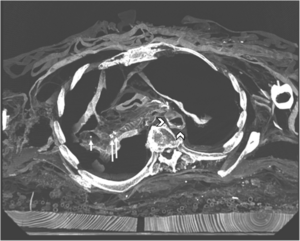Infectious Disease in the Neolithic
Section

By [Author Name]
At right is a sample image insertion. It works for any image uploaded anywhere to MicrobeWiki.
The insertion code consists of:
Double brackets: [[
Filename: PHIL_1181_lores.jpg
Thumbnail status: |thumb|
Pixel size: |300px|
Placement on page: |right|
Legend/credit: Magnified 20,000X, this colorized scanning electron micrograph (SEM) depicts a grouping of methicillin resistant Staphylococcus aureus (MRSA) bacteria. Photo credit: CDC. Every image requires a link to the source.
Closed double brackets: ]]
Other examples:
Bold
Italic
Subscript: H2O
Superscript: Fe3+
Sample citations: [1]
[2]
A citation code consists of a hyperlinked reference within "ref" begin and end codes.
To repeat the citation for other statements, the reference needs to have a names: "<ref name=aa>"
The repeated citation works like this, with a forward slash.[1]
Section 1
Include some current research, with at least one figure showing data.
Every point of information REQUIRES CITATION using the citation tool shown above.
Section 2
Include some current research, with at least one figure showing data.
The Neolithic, a period between 10000 BCE and 2200 BCE in Europe, Asia, and Africa, is characterized by a shift from the general hunter-gatherer lifestyle to one revolving around permanent settlements and a newfound reliance on agriculture. The origins of infectious diseases like tuberculosis (caused by bacteria of the Mycobacterium tuberculosis complex) has often been attributed to the Neolithic, with increasing population densities, permanent settlements, and more frequent interactions with domesticated animals. Some recent genomic research suggests that the conditions of the Neolithic were merely catalysts for the spread of tuberculosis, while others argue that the common ancestor of modern tuberculosis-causing Mycobacterium was much younger. These data follow a similar trend as research on ancient Salmonella genomes, which point to the Neolithic Revolution as a major event in the emergence of human-adapted pathogens.
Section 3
Include some current research, with at least one figure showing data.
Section 4
Conclusion
References
Authored for BIOL 238 Microbiology, taught by Joan Slonczewski,at Kenyon College,2024
